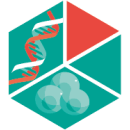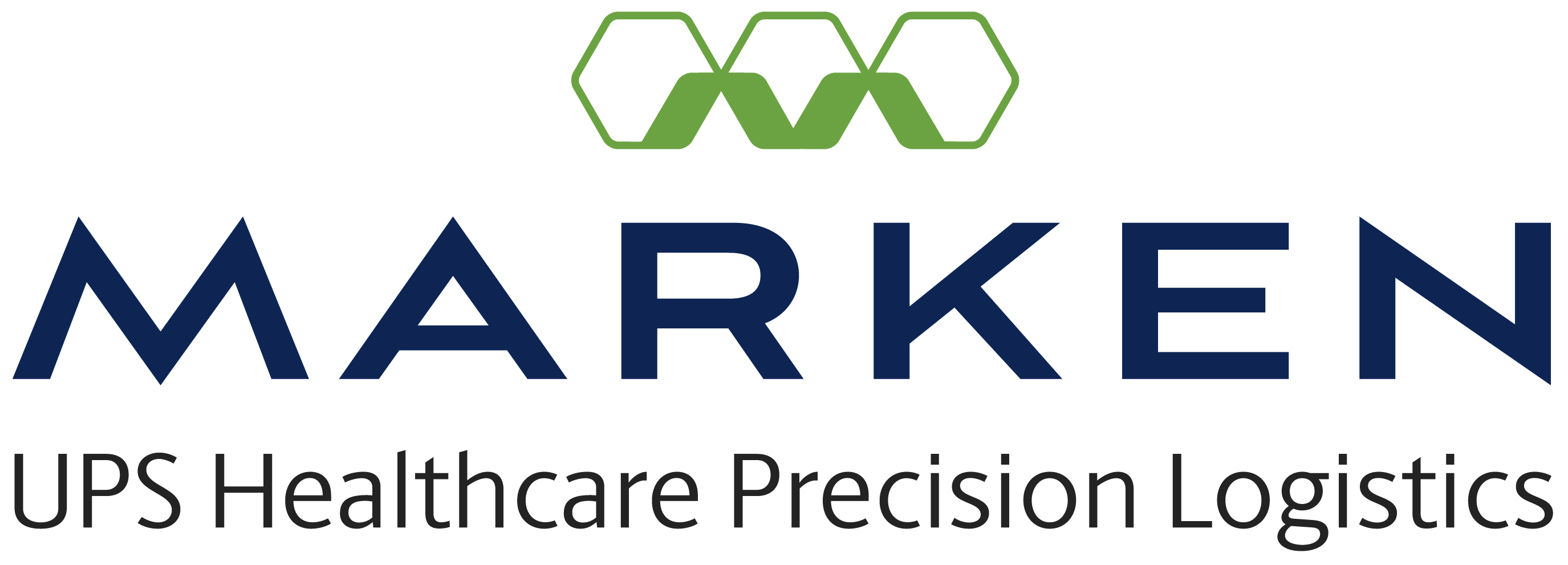From innovation to access: bridging gaps in scalability and cold chain precision logistics for advanced therapies
Cell & Gene Therapy Insights 2025; 11(6), 755–762
DOI: 10.18609/cgti.2025.084
Listen to the podcast here, or read the the interview below.
If you enjoyed this episode, you can listen to all episodes from The BioInsights Podcast wherever you normally get your podcasts.
Follow the Podcast to make sure you don't miss the next episode.
What recent innovations or regulatory shifts are having the biggest impact on how CGTs are developed, transported, and delivered?
RI: CAR-T cell therapy began more than 10 years ago, with the first patient, Emily Whitehead, who remains completely cancer-free to this day. However, there is so much that has changed since this first therapy was administered.
The biggest innovations have come over the last 5 years, and even more recently in the past 2 years, with the advent of shorter manufacturing times. We now see examples of CAR-T cell manufacturing in only 2 or 3 days, whereas previously it took 8–14 days, or even up to 21 days. Nowadays, cells can be manufactured 2 days after apheresis, and the patient already has a drug product ready to be collected and delivered. While this is great for the patient, it compresses the logistics timeline significantly and adds complexity that must be managed carefully and with precision.
There is also in vivo CAR-T cell therapy, which promises to take the cells out of the equation entirely by using either mRNA-loaded lipid nanoparticles or viral vectors as the therapy. That changes the temperature range over which these therapies are shipped, as well as the packaging, moving from liquid nitrogen shipments to -80 °C or dry ice shipments. In essence, these changes not only impact manufacturing, but also logistics and the cold chain.
Another example is armored CAR-T cells, which are sometimes used when CAR-T cells have not been effective or when patients have relapsed after treatment. These armored CAR-T cells have secreted payloads that can now treat previously intractable cancers and are even outperforming conventional CAR-T cell therapies.
Beyond innovations in cell therapies, there have also been regulatory shifts. Although there has been a noticeable increase in commercial approvals for CGTs and advanced therapies in general, geopolitical climate shifts, such as the introduction of new tariffs and other disruptions, have introduced more complexities. Additionally, trade disputes, wars, and natural disasters are creating new regulatory hurdles, that require navigation.
Furthermore, getting something from one country to another is no longer as easy as it used to be due to customs clearance. Government institutions are also under increased scrutiny regarding how much they spend and how much they receive. All of this has a direct impact on the end product—and ultimately, on the patient.
As the complexity of CGT logistics continues to grow, what are the most pressing bottlenecks or vulnerabilities in today’s cold chain infrastructure, and how can we start to solve them?
RI: There are many bottlenecks in the cold chain infrastructure. One of the biggest is around packaging and the slow evolution of data loggers used to track and trace these shipments and therapies. This is not just to ensure life-critical therapies are getting from point A to B, but also ensuring that they are maintained at the correct temperature and that there have not been any significant shock events or similar issues. There is a growth in innovation in that area but it has also been a bit of a slow crawl. These shipments contain very sensitive payloads and must be kept at the correct temperature. If they are not, we need to know when they are likely to exceed those nominal temperature ranges. As I mentioned earlier, there have been all kinds of disruptions along the cold chain. At Marken, we have seen everything from car fires to airline delays, labor strikes, IT outages, and even missile strikes at airfields.
Furthermore, the statistics show that only ~78% of flights are on time. Yet in this field, 78% on-time performance is simply not acceptable. The expectation in cold chain and specialty logistics is to be 95–99% on time as the room for error is too high and could potentially result in patients suffering serious, even life-threatening, consequences. In essence, we must be more perfect than the industry typically allows. The way we achieve that is by having a team that supports the infrastructure through relentless planning, conducting lane risk assessments, and building contingency upon contingency into our route planning. Therefore, when things go wrong, we already have a way to respond and work around the issue.
How does Marken define ‘precision’ in this context, and what technologies or processes are central to achieving that level of control, visibility, and responsiveness?
RI: My personal definition of precision comes from the scientific concept of consistent reproducibility. The analogy I like to use is of an arrow hitting a bullseye. If an arrow always hits the center on the bullseye, that is known as accuracy. However, if the arrow lands very close to the center, that is still a precise outcome. It may not be the perfect result, but it is consistent, and everything is landing within a small margin of error around the target. That is where we aim to be with precision logistics. We do not expect perfection, but we do expect to stay within our defined margin of error, aiming to be a minimum of 95%, and in many cases our clients, and the patients they serve, demand even higher precision than this.
With advanced therapies such as CGTs or radiopharmaceuticals, any significant delay can compromise the product. This might lead to temperature variations if the product is left out too long, or exposure to pressure or shock. In turn, that can result in the loss of cell viability, payload, or packaging integrity if the product is left at the wrong temperature for too long.
When that happens, the cells, nucleic acids, radioisotopes, or other components, such as proteins, will inevitably lose potency and creates other issues. For example, if packaging integrity is lost, contamination can occur. If the radioisotope has a short half-life, the therapy could be rendered useless. Therefore, we must be extremely careful not to let those things happen. Precision is no longer optional—it is essential.
These therapies are typically being dosed in critically ill patients or those with rare diseases, and in many cases, these patients have failed all other prior lines of therapy. For some, this can be the difference between life and death, which is why we design for robustness. We focus on strong central planning and precise cold chain management. Additionally, we leverage smart technology, such as real-time or near real-time monitoring via specialized data loggers and through our control tower. This is technology we incorporate into our packaging with visibility tools and sensors that can measure temperature and GPS coordinates.
Regarding Marken’s definition of precision, we have strategically unified under a single umbrella with UPS Healthcare, bringing together our legacy partners—including MNX, Bomi Group, Polar Speed, RH Logistics, BPL and other industry leading UPS organizations. Together, we are Marken, UPS Healthcare Precision Logistics—a global standard for cold chain excellence. This allows us to leverage our own internal resources in a way that was not previously possible. For example, we leverage the UPS air network with priority, and we are capable of fully utilizing this resource for advanced therapies. It is just one example of how Marken applies the concept of precision more effectively as we continue to support the growing number of advanced therapies entering the pipeline.
Scale is often a limiting factor for emerging therapies. What do scalable logistics look like in the CGT space, especially when dealing with personalized, patient-specific treatments across borders?
RI: Currently, scalability is a common theme in the CGT field, as it is one of the biggest bottlenecks. Many people are building new gadgets designed to pump out more cells or viral vectors.
Looking a few years back, some evidence suggested that ~25,000 CAR-T cell therapies had been dosed in patients at that time. Today, the estimate is significantly higher with ~50,000 patients dosed with CAR-T cell therapies [1]Telegraph Hub. ISCT leads global scientific consortia to respond to recent FDA report on risk of T-cell malignancy in patients following CAR T-cell immunotherapies. Jan 9, 2024. [2]CAR T Vision. Gene, Cell, and RNA Therapy Landscape Report. Jun 2025. . That illustrates the exponential growth happening in this space. For example, there are now around 139 approved cell, gene, and RNA-based therapies, and greater than 4,400 in the clinical pipeline. That number grew by 10% in just the past year. When looking at the industry growth, it is exponential. Market forecasts suggest a 20–30% compound annual growth rate (CAGR) over the next 10 years, which is a conservative estimate.
This kind of growth is what concerns many developers, as we need to scale these operations to treat more patients. At Marken, we improve scalability by developing and adopting new tools and technologies, including automation, better cross-disclosure, and the integration of AI and machine learning. These are not only integrated in manufacturing, but also in logistics, particularly to improve day-to-day tracking and tracing. At the same time, we have live operators in control towers, who are available 24/7 by phone within 15 seconds or less to solve problems as they arise.
Additionally, to scale successfully, we must also maintain strong visibility into our operations, especially in an uncertain world. We must also invest in our people who carry out daily operations, packaging preparation, lane mapping, and inventory management. It is an expansive ecosystem across logistics and manufacturing that requires various operational hubs.
As mentioned earlier, we have a fantastic, dedicated team, including project managers, operational excellence coordinators, and investigators where each one of them is dedicated to doing the right thing. These people are not just trained in logistics, but also in the biology behind CGTs and manufacturing, which helps them grasp their impact on patients and gives them the confidence to speak the language necessary to address these very complex challenges.
Looking at Marken’s role in the cell and gene therapy (CGT) ecosystem, how does your team support the unique logistics needs of CGTs, particularly when it comes to ensuring global delivery with uncompromised product integrity?
RI: Marken has a specialized Advanced Therapies Division with over 100 employees. There is enough infrastructure to be situated globally in strategic locations and regions where patient and client needs are the greatest, which allows for more agility and flexibility.
The infrastructure includes a global control tower comprising a 24/7 monitoring team. Additionally, there is a packaging department, an operational excellence team, an operational readiness team, as well as dedicated project managers. These teams help support the unique logistics needs in CGT, while also being precise, lean, and agile enough to make key decisions in the moment and act on them. This helps remove some of the mystery for the client and customer when things may be going sideways, as they often do in logistics.
Looking ahead, the CGT pipeline is only getting more crowded and complex. What trends or disruptions do you foresee over the next 3–5 years, and how is Marken evolving to stay ahead of those changes?
RI: We are seeing the greatest impact due to the current geopolitical climate, as well as climate change. Natural disasters seem to be becoming less ‘natural’ and more extreme as time goes on. The rise of more authoritarian governments is also creating political strife the world over. While these types of disruptions are not necessarily new, their frequency has increased. As a result, our ability to use certain airports or roadways is increasingly impacted.
We rely on outside service providers to help us do this work, and they are often at the mercy of these uncontrollable events. Many people in the logistics field might say some of these events are considered controllable. That is because we choose which carriers we use and which service providers we partner with. For example, if one provider fails to deliver the right solution in a moment of crisis, we can choose not to work with them again.
Logically, we are listening to our customer feedback and demands. We are making real investments in our people, as well as in owned vehicles, better tools, and advanced technologies, such as AI and real-time data loggers. For instance, it is crucial to consider whether our data loggers can track GPS location in an app, point to the shipment’s location, alert us if it is heading in the wrong direction, or trigger a push notification if it enters or exits the wrong geofence.
We often use this information in unconventional but crucial ways. For example, if a shipment is marked as ‘tendered’ at the airline cargo desk and the flight has departed, but the GPS still pings on the tarmac, we know something is wrong. Conversely, if the GPS stops pinging once the shipment exceeds a certain height threshold or altitude, we know the package has been uplifted.
Additionally, if we face a severe weather disruption, flights are cancelled, there is an IT outage (such the CrowdStrike incident), or a war that is completely out of our control, we will do everything possible to communicate transparently and get the therapy to the patient despite these obstacles.
We know there is a sick patient out there whose life might depend on us. Therefore, we must do everything we can to ensure that the patient’s family, their medical team, the manufacturers, and the researchers who have invested countless hours and millions of dollars into developing these therapies. They can all count on us to deliver, because failure is not an option for us.
References
1. Telegraph Hub. ISCT leads global scientific consortia to respond to recent FDA report on risk of T-cell malignancy in patients following CAR T-cell immunotherapies. Jan 9, 2024. Link
2. CAR T Vision. Gene, Cell, and RNA Therapy Landscape Report. Jun 2025. Link
Biography
Rohin Iyer leads Marken’s advanced therapies division, managing the critical distribution of both clinical and commercial personalized medicines. Leveraging Marken’s unique cell and gene therapy (CGT) portfolio as its flagship premium service offering, he oversees the complex logistics across a diverse array of advanced therapeutic modalities ranging from nucleic acid therapies to CAR-T therapy, as well as the raw materials used to manufacture them. Dr Iyer’s team provides specialty logistics solutions to both emerging and highly established biopharmaceutical developers in the field and leverages an extensive global cryogenic and operational network, specialized control tower oversight with advanced visibility and interventional tools, and dedicated project management and operational excellence staff to deliver innovative solutions for clients and patients. His leadership expertise includes over a decade in CGT development and over 15 years of hands-on laboratory work focused on stem cells, tissue engineering, immunotherapy development and regenerative medicine at large pharma organizations. With extensive experience in portfolio management, process development and bioprocess optimization in CGT and immunotherapy, he has played an instrumental role in supporting the clinical research and development of regenerative medicines. Rohin obtained his Bachelor of Applied Science and his PhD in Biomedical Engineering at the University of Toronto, Toronto, ON, Canada.
Affiliation
Rohin Iyer PhD, Senior Director, Cell and Gene Therapy Operations, Marken, Woodbridge, ON, USA
Authorship & Conflict of Interest
Contributions: The named author takes responsibility for the integrity of the work as a whole, and has given their approval for this version to be published.
Acknowledgements: None.
Disclosure and potential conflicts of interest: The author has no conflicts of interest.
Funding declaration: The author received no financial support for the research, authorship and/or publication of this article.
Article & Copyright Information
Copyright: Published by Cell & Gene Therapy Insights under Creative Commons License Deed CC BY NC ND 4.0 which allows anyone to copy, distribute, and transmit the article provided it is properly attributed in the manner specified below. No commercial use without permission.
Attribution: Copyright © 2025 Marken. Published by Cell & Gene Therapy Insights under Creative Commons License Deed CC BY NC ND 4.0.
Article source: This article is based on a podcast, which can be found here.
Podcast recorded: May 21, 2025.
Revised manuscript received: Jul 8, 2025.
Publication date: Jul 18, 2025.



